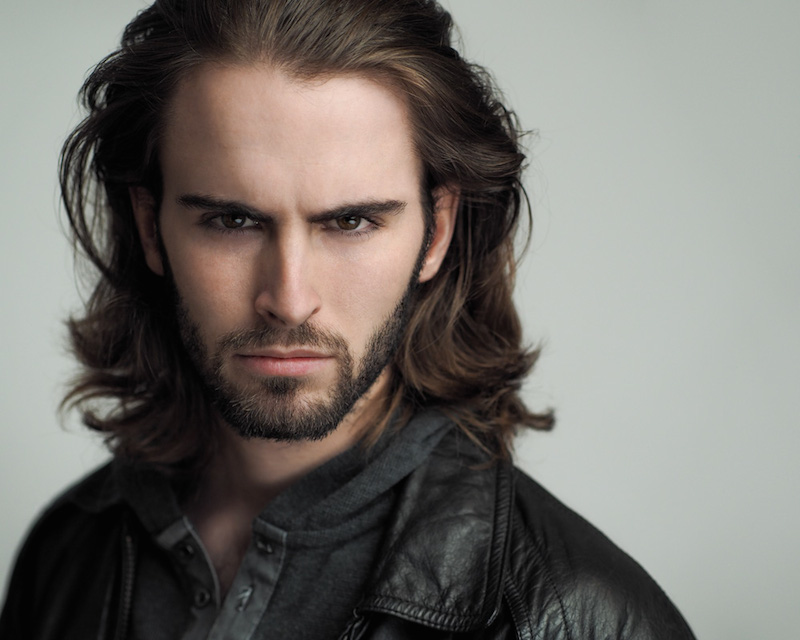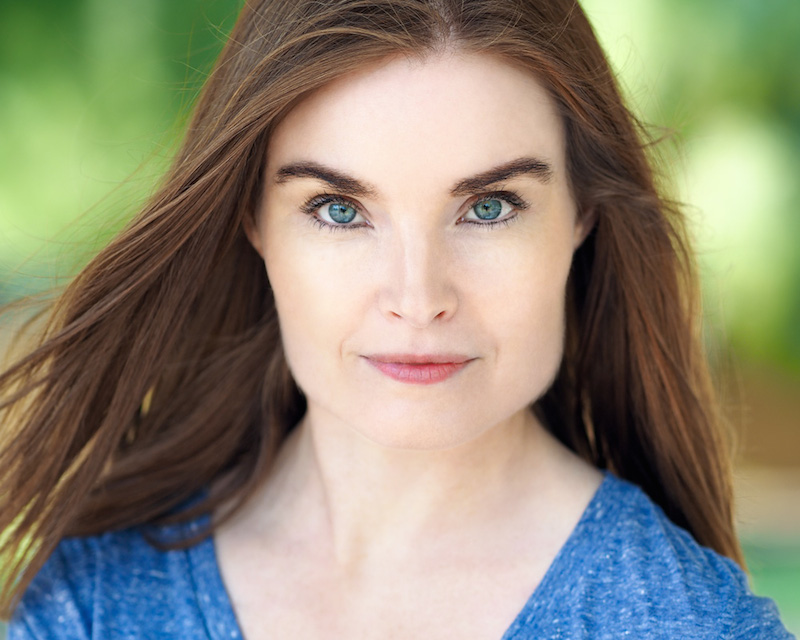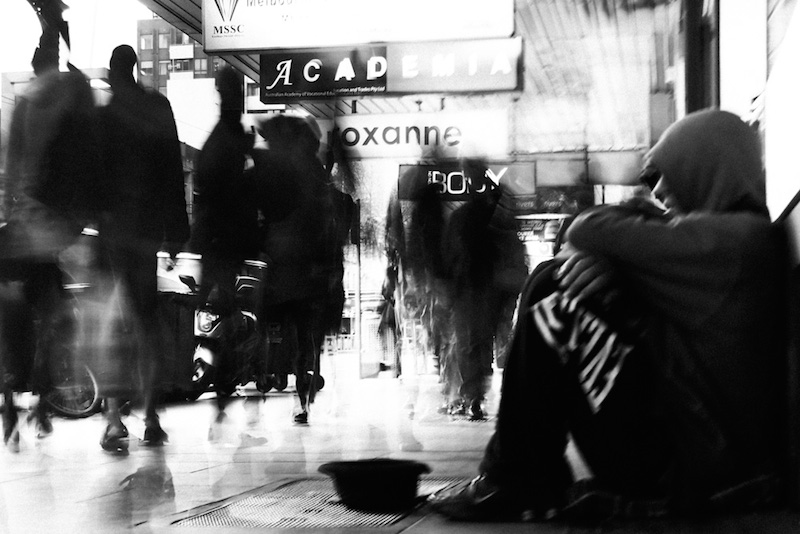Welcome to our series of 100 interviews we will be holding with photographers who use mirrorless cameras for their work! “Switching to a smaller and lighter system” has become somewhat a buzz phrase as of late, but many working photographers take this philosophy seriously. From medical reasons such as resolving back and shoulder pain to the simple realisation that bigger does not mean better, photographers are turning to mirrorless systems now more than ever before.
This week’s interview is with Damon Hunter, a professional head shot photographer and actor from Victoria, Australia who specialises in actors and corporate. He switched from Nikon to the Olympus OM-D E-M1 for all his photography, both professional and personal, and hasn’t looked back since.
Visit Damon’s website and check out his work on Facebook, Twitter and Instagram.
All images in this article are property of Damon Hunter and are published with permission.
1. Who is Damon Hunter in three simple sentences?
Intensely driven and goal-orientated. A perfectionist who has high expectations not only of himself but also those he comes into contact with. Someone who strives to always do what’s right.

2. What initially drew you to the headshot photography genre?
It’s funny you ask that because when I first picked up a camera and started shooting I swore the one thing I would never shoot would be headshots, primarily because most of the ones I’d seen, barring a few, were the same; boring, with fake smiles or steely-eyed gazes. I actually held that view for years and it wasn’t until I was flipping through photography articles online one day (that’s kind of an addiction for me, reading photography articles!) that I came across some of the headshot work coming out of the U.S. and it was so different! The expressions were interesting, the lighting was amazing, the shots just jumped off the page – or screen, as the case happened to be. I hadn’t seen anything like it before and I thought, ‘I wonder if I could shoot images like that…’ And that’s where it started. But added to that, I’m an actor as much as I’m a photographer, and so headshots are something I’m very familiar with, having had a number of them taken of me over the years.

3. How do you go about directing your clients during a shoot?
I’m very relaxed during a shoot and have a lot of energy, so I talk a lot! But whilst all of that chatter is helped by adrenaline, I also do it purposely to put my clients at ease. Basically I don’t want them taking the shoot seriously, I want it to be fun and so if they see me being a bit of a goose they can think, “Well he’s obviously not stressed, so why the heck should I be?!” A lot of people just naturally tense up when they’re getting their photo taken and my job is to get rid of that, to almost make the camera invisible. Once they’re actually in front of the camera I keep the chatter going but I’ll regulate my energy depending on what I’m trying to get from them. For example, if I want warmth I’ll talk a lot and joke around, and get them laughing. But if I want some intensity from them I’ll shift gears right down, back off on the chatter and drop my energy levels to bring them down with me.
Basically, I rely a lot on using my own energy to control theirs.
As far as actual direction goes, I’ll direct them literally millimetre by millimetre, telling them where to move their head, shoulders and body, and often showing them what I want. With actors I’ll often give them a character and scene, and then I’ll direct them as that character in order to get a particular look. And I don’t stop until I’ve got it.

4. You’ve summarised this topic in a helpful video on your website but could you briefly tell us what you feel makes a great headshot?
A great headshot needs to convey something to the viewer, it needs to be more than just a nice photo you’d give to your mum, or in which you look handsome/pretty or whatever. The viewer needs to look at that shot and feel engaged, feel that the person in the photo is looking back at them and has something to say.
It all comes down to expression.
The eyes are important, yes, but the mouth too, everything, it all needs to work together to engage the viewer. And then there’s features; a good headshot photographer will start examining a subject’s face from the moment they meet, looking for features that need to be emphasised or downplayed. Of course, the lighting needs to be great also but anyone can learn to set up lights, it’s the expressions and knowing how to find a person’s angles, that separates an ok shot from a great one.

5. In addition to being a headshot photographer, you are also an actor. How do you feel your experience in the acting field has contributed to your understanding of the headshot genre and your clients?
My acting experience has been invaluable, and continues to be. On a networking level, I’m constantly meeting with casting directors in my capacity as an actor, and whenever I can I’ll ask them what they look for in headshots, and that’s where I get a lot of my information and insight from. I also have great connections with a number of acting agents and schools, and they’ll tell me what they’re looking for when they send someone to me for new shots. I kind of get the best of both worlds by being an actor because I’m completely immersed in the industry. From a directing perspective, being able to relate to other actors in terms of setting a scene and character helps me in a big way when it comes to giving direction because sometimes I’ll use that method to coax out a particular expression.

6. People are often insecure about certain aspects of their appearance. How much post-processing and retouching is generally permitted for a head shot?
A lot of the time the things people are insecure about are things that no one else would notice, but there are occasions when something stands out in a still image that just wouldn’t be noticed on a moving image, and so on those few occasions I’ll alter them in post. But most of the time I keep the retouching to a minimum, simply removing stray hairs, blemishes, bags under eyes, things like that. I absolutely cannot stand that over-retouched look where everyone has skin so smooth it looks like plastic. Skin has pores and those pores, unless they’ve been covered by makeup, need to be visible.
Basically, a headshot needs to look like the person, although that person on a good day as opposed to a bad day!
This is especially important for actors, who are being chosen to audition for a role primarily based on how they look, in combination with their showreel and/or CV – but sometimes they’re chosen purely on their headshot. So if they walk into a casting and look nothing like the person in the shot, guess what – they ain’t gonna’ get called in again! So yeah, there’s always some retouching but I keep it real.

7. You recently switched over from a DSLR to the Olympus OM-D E-M1 for your work. What made you decide to switch systems?
A number of factors went into that decision. Firstly, and not in order of importance but I’ve got to be honest – aesthetics! The E-M1 is just a beautiful camera to look at! Although I’ve recently purchased the Olympus Pen F for all of my street photography and that’s even prettier!
But I digress. Ok, so aside from the way it looks, I do a lot of street photography and carrying around a DSLR with a large lens (I used to shoot Nikon), especially when I ride a motorbike and throw it all in a messenger bag over my shoulder, along with an iPad, wallet etc. was just too heavy. The E-M1 came out just as I was in the middle of a photographic safari in Africa. I’d been keeping my eye on the Olympus for some time prior to my trip and so when I’m in Africa, lugging around this Nikon with a Sigma 50-500 attached (I felt like I was carrying a shotgun!) I thought, screw this! I called up my go-to store for all my gear, Michael’s in Elizabeth Street, Melbourne (yes, that’s me giving them a shoutout!) and ordered an E-M1. I picked it up as soon as I got back, sold the Nikon system and have never looked back.
Of all the things I love about mirrorless though, the thing I like most is the ability see the image in realtime through the viewfinder, as opposed to having to shoot, playback the image to check your exposure etc and then re-shoot.
With mirrorless you can set it up so that you see all of the changes you’re making to exposure, white balance, etc as you’re making them, meaning that by the time you press the shutter you’ve already got everything dialled in. In a studio environment that’s not really a big deal but when you’re shooting street it’s huge – it really cuts down on the missed-moment factor!
8. What are your go-to lenses for the system?
It depends what I’m shooting. For studio headshots I use the Pana-Leica Nocticron 42.5 1.2. For outdoor headshots it’s the Olympus 75 1.8. For street I use the Olympus 40-150 2.8 PRO (I’m different to most street photographers in that I like to shoot from a distance), and for walkaround/travel I use the Olympus 12-40 2.8 PRO. So basically I use a different lens for different jobs, very rarely do they cross over.
9. One of your latest personal projects is called Living Rough, which challenges the preconceived notions we have about the homeless and those who are living rough. Can you share how this project was born and what the reaction has been so far?
It actually came about by accident, as strange as that probably sounds. I was out shooting street and it was a hot day. I was in a popular Melbourne laneway with lots of cafes and restaurants, when I saw a man sitting on some milk crates in a car park driveway. He had his top off, some shopping bags next to him and bottle of Coke, and it was pretty clear that he was homeless. The way the light was striking him fascinated me, and so I took a number of shots. It wasn’t until I downloaded them that I noticed that this man had quite striking features, and an incredibly expressive face. I wished that I’d spoken to him and asked how he got to be where he was, and what he was doing beforehand. And that was how Living Rough began.
The reaction to the project has been overwhelmingly positive and even some of the people I’ve photographed who are living rough, have made comments on the page, which has been great to see.

10. How do you approach and gain the trust of the homeless individuals you photograph?
I’m pretty candid, I just tell them straight up what I’m doing and why I’m doing it. I make it clear that I don’t work for a newspaper or anything like that, that I won’t publish their stories or the images if they don’t want me to, and I ask their permission before turning on the tape recorder (well, my iPhone but same thing these days) and getting their story.
99% of the time I’ll take the photographs without their knowing I’m doing it and before I speak with them (that’s one of the reasons why I use a long focal length for street photography) so that the images are completely candid, but then I’ll always approach them, show them the shots I’ve taken and emphasise that I won’t use them if they don’t want me to.
And I never have. I have some shots and stories that I would love to share because I think they’re so impactful, but I never will because I’ve been asked not to. And I think that’s one of the other things that helps me gain their trust; it’s gotten to a point where some of them have heard of me and know about the project. I remember one time when a subject was suspicious of me and didn’t want to talk, until someone else I’d photographed and spoken to happened to walk past and vouch for me, and that made all the difference.

11. All the photographs in the series are in black and white. Is there a specific reason you chose to shoot in monochrome instead of colour?
There are a few reasons for this. Once again, in no order of importance but firstly, I just love shooting street in black and white. 99.9% of my street photography is shot in black and white, simply because I love the way it emphasises light and shadow. I like that I can blow out hightlights and have it really add to the images, which you just can’t do as easily with colour. Same thing with adding grain. So yeah, part of it’s purely aesthetic.
But with Living Rough, I think black and white also reflects the bleakness of the lives the people I interview and photograph are living.
You’ll often see a lot of grain in my Living Rough images and that’s not because I’m using high ISO, it’s because I’m adding it to reflect the rawness of that way of life. Theres nothing silky smooth or glossy about it.

12. Through Living Rough, do you feel you have been able to raise awareness about the issues surrounding homelessness? What is your ultimate goal with this project?
To some extent, yes but it’s such a huge issue, one Facebook page is never going to be enough, unfortunately. I’ve had some people comment that its made them think of the homeless in a different way, which is great, but it’s a drop in the ocean. But still, you do what you can and hope that you’re making a difference somewhere, somehow.
As for my ultimate goal, I don’t really know. I used to think that a book was where I wanted to take it but the time commitment to go out and get that many images and stories would be almost impossible for me unless I had some sort of funding. I mean, I could probably do it over an extended period of time without funding – a few years, for example – but it would be pretty tough. So now I’m thinking an exhibition of some sort but on a grand scale. I think I still want a few more images and stories, and then I’ll think about what I’m going to do with them, but I’m definitely going to do something, I’m not just going to leave it at a Facebook page.
Do you have any questions for Damon about his professional work, his street photography or the E-M1? If so, you can leave him a comment below!
